The Angola Museum at the Louisiana State Penitentiary (1) dons larger-than-life photographs of the lethal injection room and agricultural work fields printed as wallpaper. A theatrical set of a solitary confinement cell sits behind green steel bars, placing you as a guard. Permitted there are no funerals to be held on the ground, a horse drawn hearse awaits its next lap in the center. The museum which claims to “preserve the long and storied history of crime, punishment, rehabilitation, criminal justice, and reform in Louisiana” sits in a double-wide trailer which once was the St. Francisville, Louisiana Bank of Commerce. Tourism and the “historic site” serve a cultural consciousness disavowing universal implication. “Historic site” designates itself as a place exempt from multiplicity or continuation, thus creating a false sense of completed story. How does “site” and “sight” operate in an unseen yet highly imagined landscape? (2) Perhaps more pressing, what about when the landscape seen is not imagined?
The early instinct for discipline and control was spectacle. Then, as Foucault described, disciplinary control took a turn towards the un-spectacular/hidden, or self-spectacularized. I believe the current mechanism of punishment could be characterized by a doubling; rather than existing as a seeable or unseeable entity, subjugation functions dually and as a concretely imaginable entity. Parallelly, there is a literal doubling in the responsibilities of the people who operate the carceral institutions in which they also operate museological institutions. (3)
The carceral is a system whose function is dependent on the unseeable-ness of its proceedings. In place of the witnessing (4) of the prison’s inner body, the prison museum and the prison film (5) emerge, seemingly as a surrogate for our eyes. Strangely though, our eyes can see the skin of the prison, and we can feel its “capillaries”. These surrogate bodies are not created for us in our incapacity, rather the museum and the film is created to push us away from the fateful questioning of the power and domination that rely on the absence of the seen. (6)
On my first visit to the Angola Museum, I thought ‘museum time’ failed. If the temporality of the ‘museum’ is characterized as one of ‘past’, and the temporality of the ‘prison’ is characterized as one of ‘present/future’; is there a temporality distinct to the ‘prison museum’? The act of characterization has a temporality of the ‘freeze’, so is there any temporal difference at all? The Angola Museum seemed different because it was the first time I not only saw a vacuum, (7) but also heard a vacuum in the exhibition space. A man (8) who came to be identified as Morris (9) was repairing, cleaning, and brewing coffee for the director who was leading me on a brief tour. When I asked, the director revealed to me that Morris is classified as a Class A Trusty, granting him the privilege to perform his state-mandated labor in the museum rather than out on the fields.
1. The Louisiana State Penitentiary is the largest maximum security prison in the world. At 18,000 acres, the prison’s property is an expanse larger than the island of Manhattan. The actual buildings holding the prisoners and guards (those who run the prison live in “the safest neighborhood on Earth” on the prison’s property) are but a fraction of this land, but the 4,000 people incarcerated are responsible for farming the 18,000 acres by force for between $0.02 - $0.40 an hour. The 13th amendment in the U.S. constitution grants every state the right to prison labor. Every state makes use of that amendment, with wages averaging below $1.
2. I made my only appearance in a movie at 12 years old, playing the childhood memories of a man living his last day prior to his execution in Louisiana State. At the time, those $200 made me rich.
3. The warden, deputy warden, and administrative director of the Penitentiary are amongst the museum’s board of directors.
4. As David Levi Strauss writes in The Body of Evidence: “The word for “witness” in both Sanskrit (vetter) and Greek (istor) means “the one who sees,” or “the one who knows because they have seen.” This priority of the visual has informed the practice of law from the beginning. A rule enunciated in the Shatapatha Brahmana (probably written down in the third or fourth century BC) holds, “If now two men dispute (have a lawsuit), one of them saying ‘I have seen,’ and the other ‘I have heard,’ the one who says ‘I have seen’ is the one whom we must believe.” ”
5. Allegedly, the first prison film, Prison Time, was made in 1910. I have been unable to track down any documentation of this film, and it has come to hold pure mythology in my eyes. The first cinematically archived imagination of the unseen space of imprisonment can only be retrieved through an imagining of what it may have been. The very incarnation of the prison film seems to have fallen into the same fate as the prison body itself. The prison film as a concretizing media tends to be rewritten every couple years, whereas the prison museum remains reasonably intact.
6. On February 11, I took a bus to Philadelphia to visit the Eastern State Penitentiary Museum to attend a tour designed for the blind. The Eastern State Penitentiary, which is currently inactive, was designed by John Haviland for a $100 prize in 1829. Following similar concerns that brought about Jeremy Bentham’s panopticon prison: maximum surveilling of prisoners with minimal guard labor. Haviland’s design was star-shaped, with additional blocks disrupting this plan later to hold more prisoners. As we stood in the central guard zone, I refrained from taking a photograph of a woman who had a guide dog and wore a shirt that read “The Seeing Eye”. This collapsing of language and connotation made me laugh.
7. “This article is about empty physical space or the absence of matter. For the appliance, see vacuum cleaner. For other uses, see Vacuum (disambiguation). "Free space" redirects here. For other uses, see Free space (disambiguation).” Free space, according to wikipedia, is a place that we are not equipped to exist within. On vacuums, Dr. Kris Lehnhardt at NASA says “all of your body tissues that contain water will start to expand… death is likely in less than two minutes.” In 2 minutes, light will travel the world 898 times. In 2 minutes, sound can travel 24.6 miles. In 2 minutes, I can walk 217.9 meters. Strangely, decomposition is slowed exponentially inside of a vacuum, or free space. Maybe this leads us towards a kind of archival photograph that exceeds 200 years!
8. ‘Sam the Perpetual Prisoner’ lives forever, or however long his batteries live, at the Big House Prison Museum. The museum at the active Folsom State Prison in California also houses a collection of Johnny Cash Memorabilia. ‘Sam’ differs from Morris in that the director of the Big House Prison Museum does not need to confirm ‘Sam’ is still present working every 3 hours to the other guards.
9. Once a name is said enough times, that name becomes a word, and once a word is said enough times, that word becomes a sound, and once a sound is made enough times, it becomes a drone, and once a drone drones long enough, it slips away into the sound of stillness, or the sound of electricity, or the sound of air.
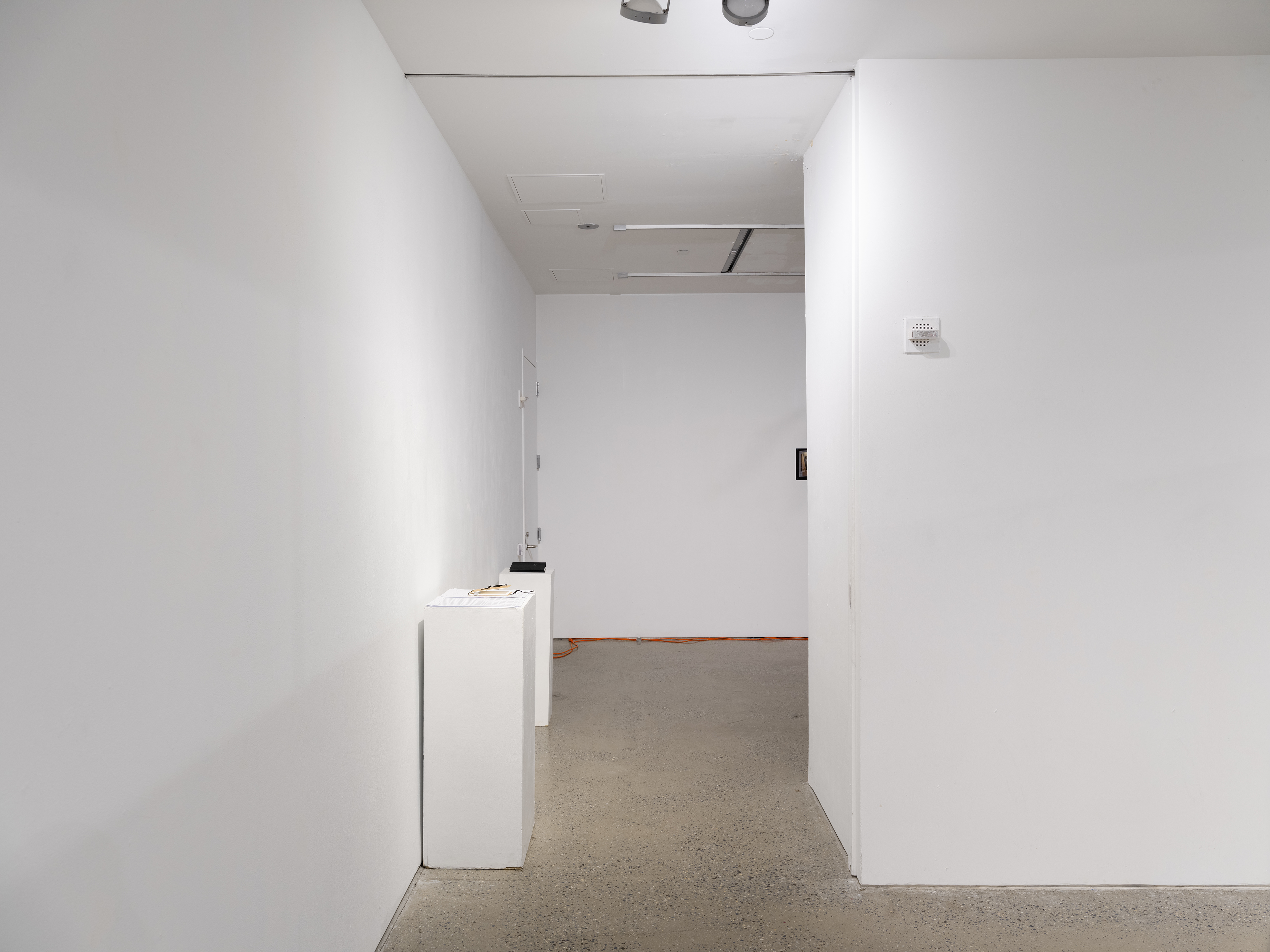

exhibition text and checklist

'Hue Shift Hear Say' materials: text; artist book.
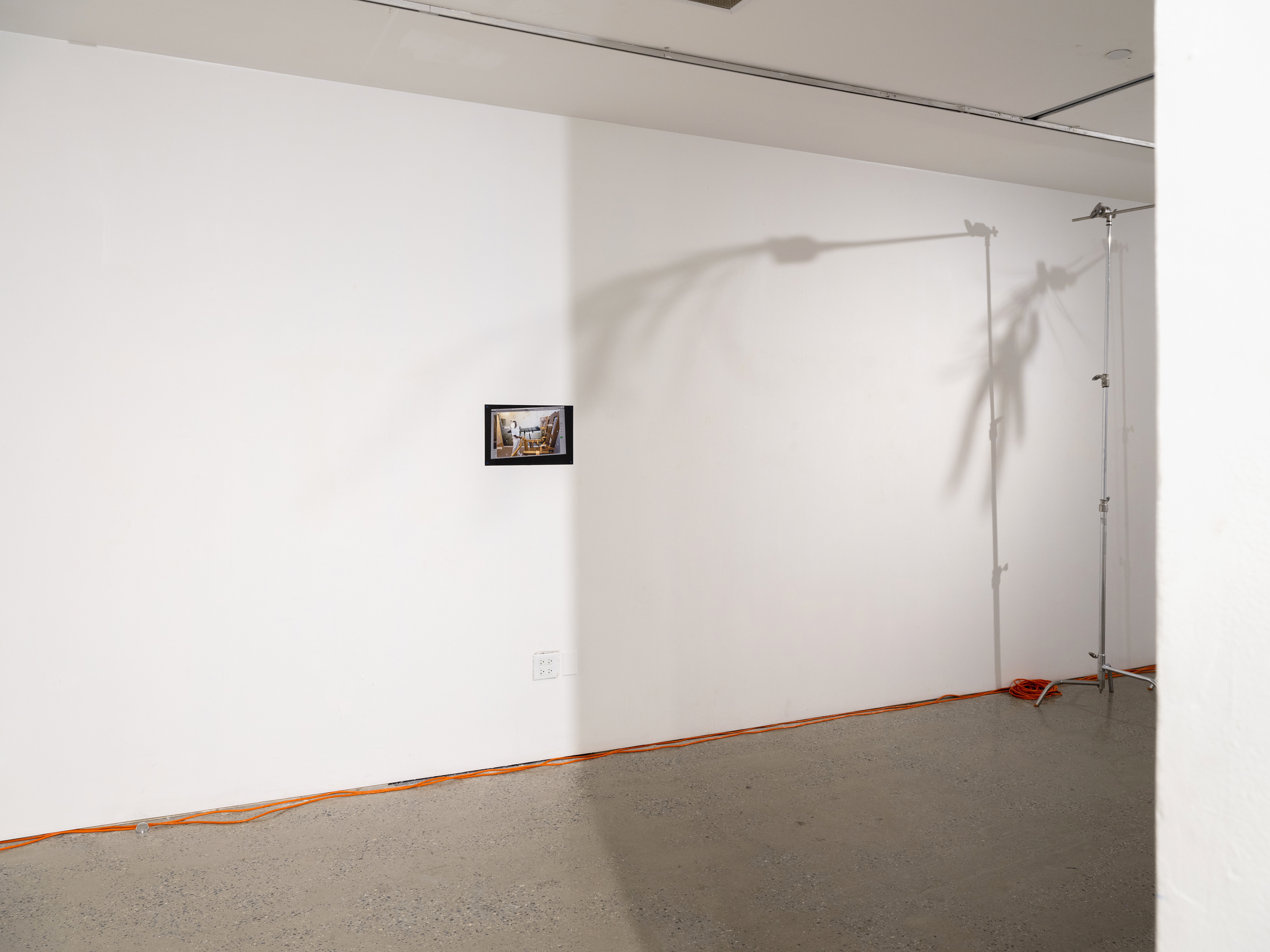
'Palimpsest' materials: unlicensed Alamy stock image, non-archival pigment print behind non-uv protective plexiglass, concrete screws, humming.
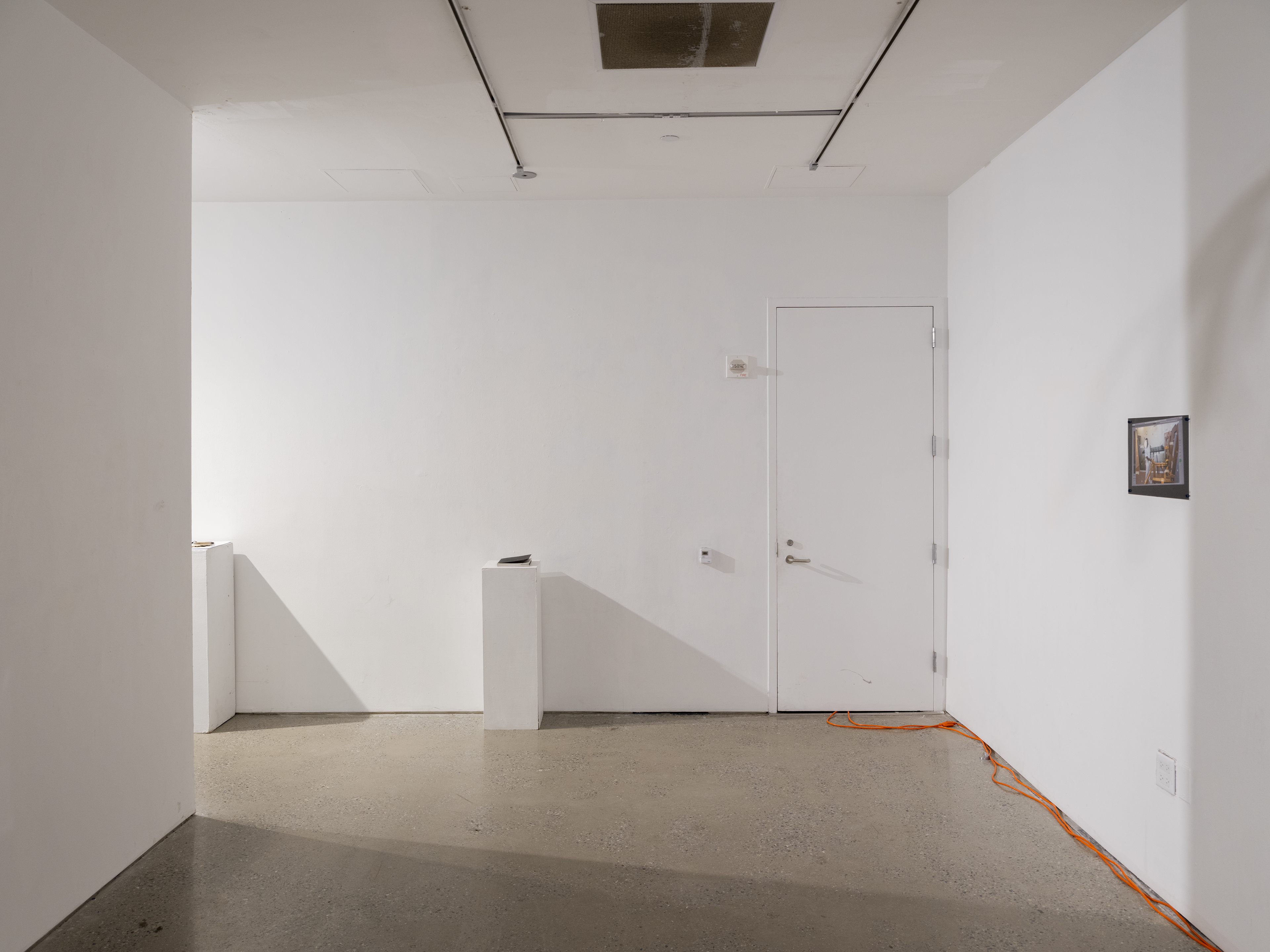
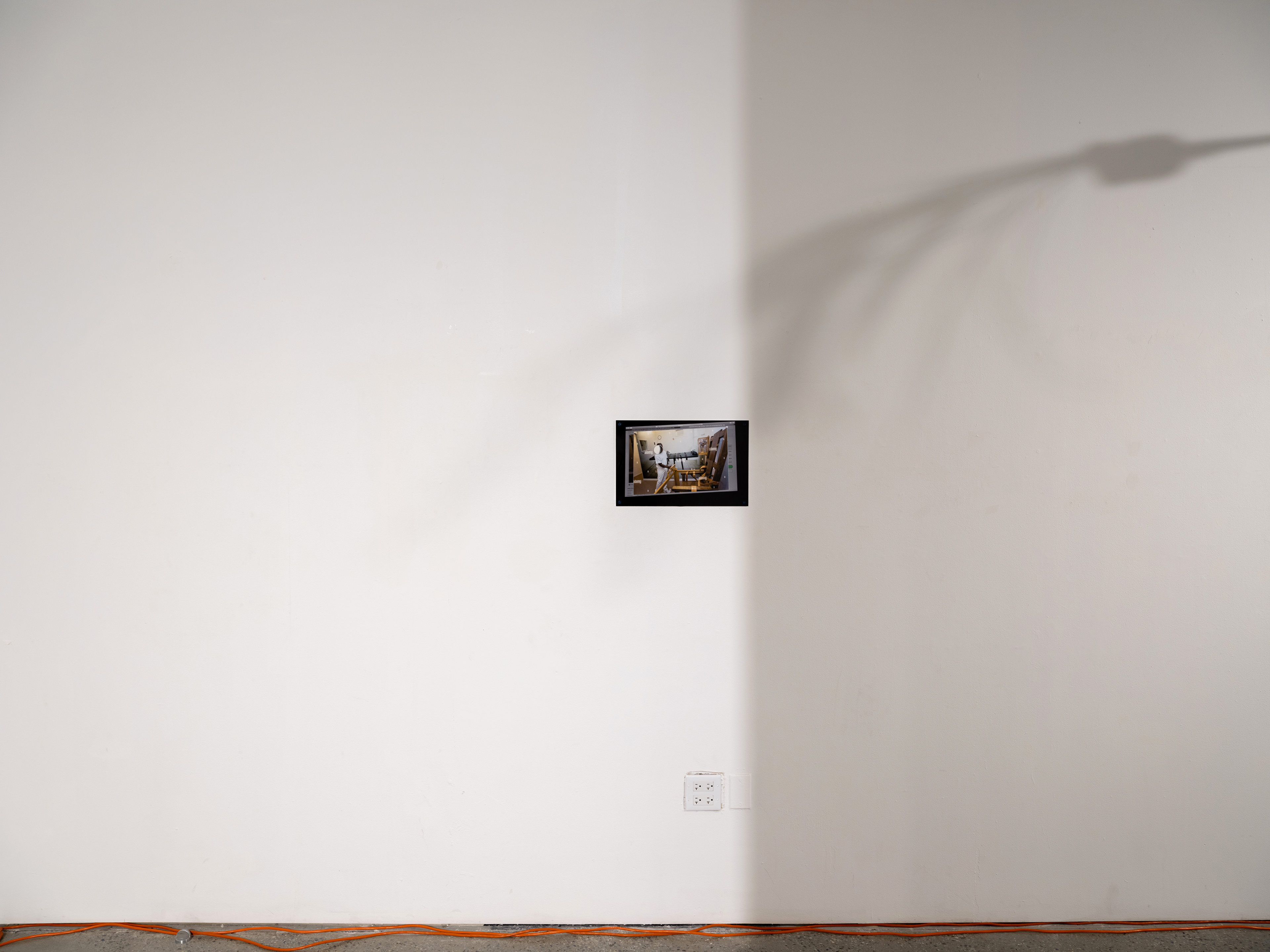
'Palimpsest' materials: unlicensed Alamy stock image, non-archival pigment print behind non-uv protective plexiglass, concrete screws, humming.
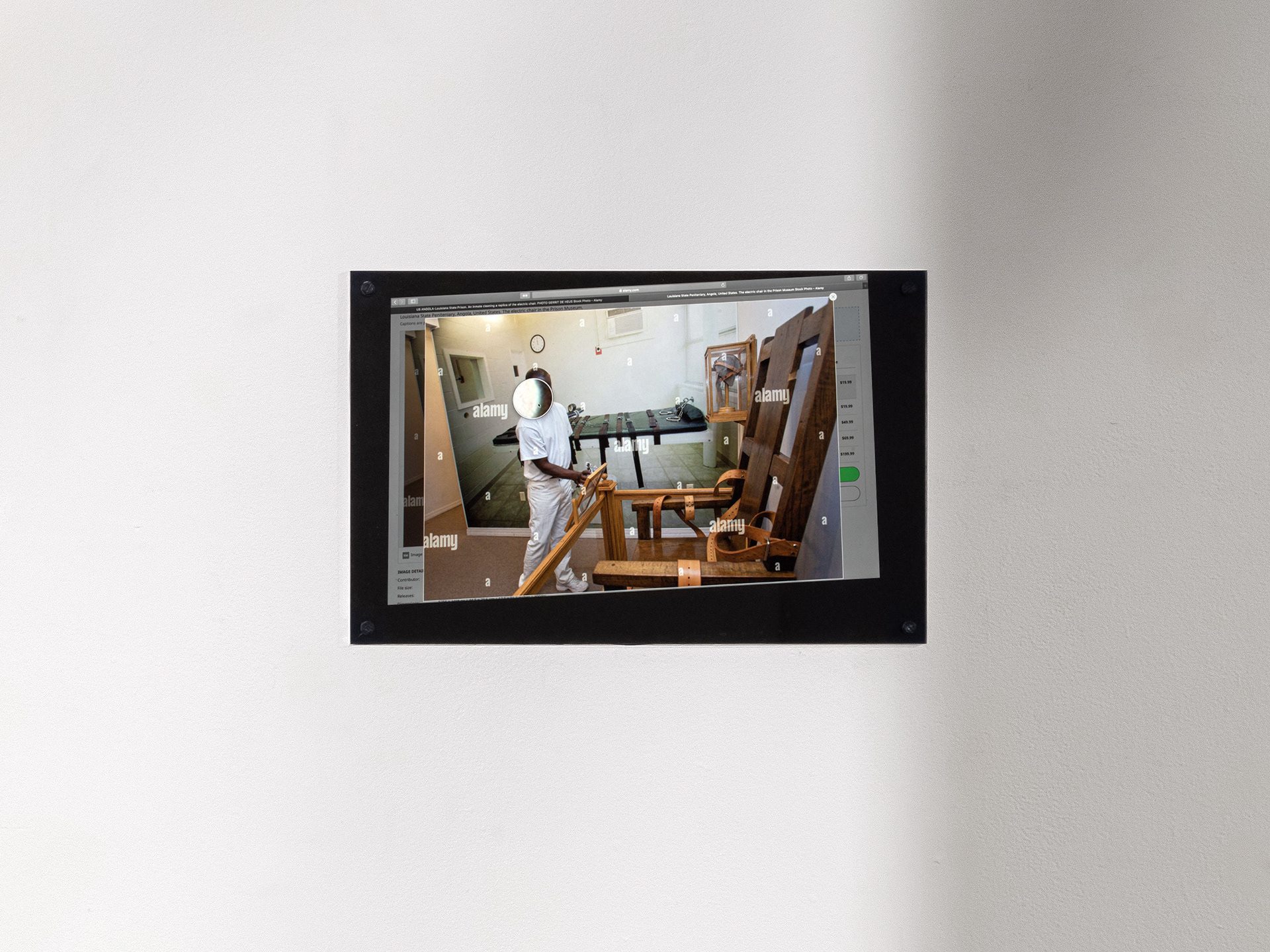
'Palimpsest' materials: unlicensed Alamy stock image, non-archival pigment print behind non-uv protective plexiglass, concrete screws, humming.
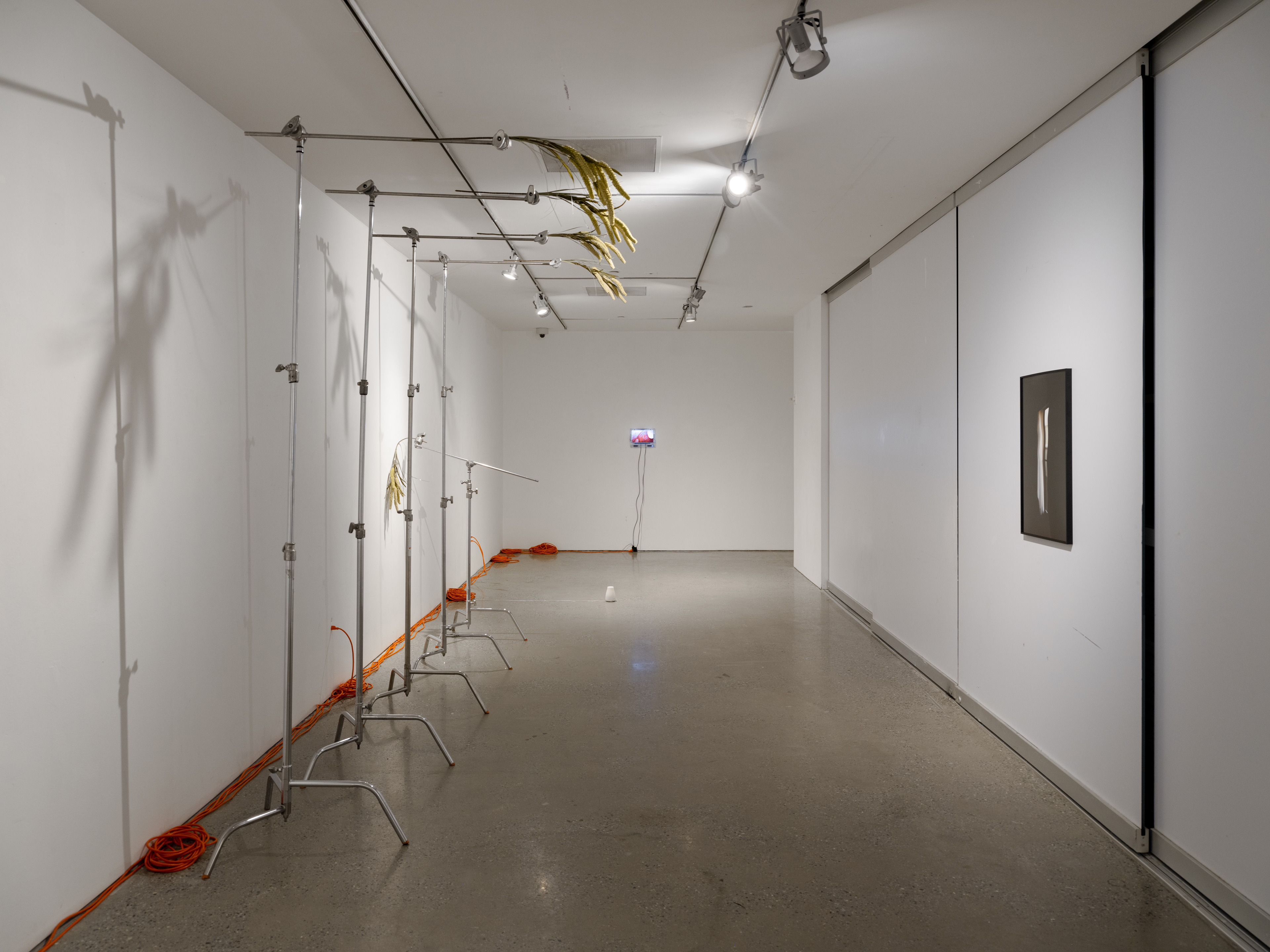
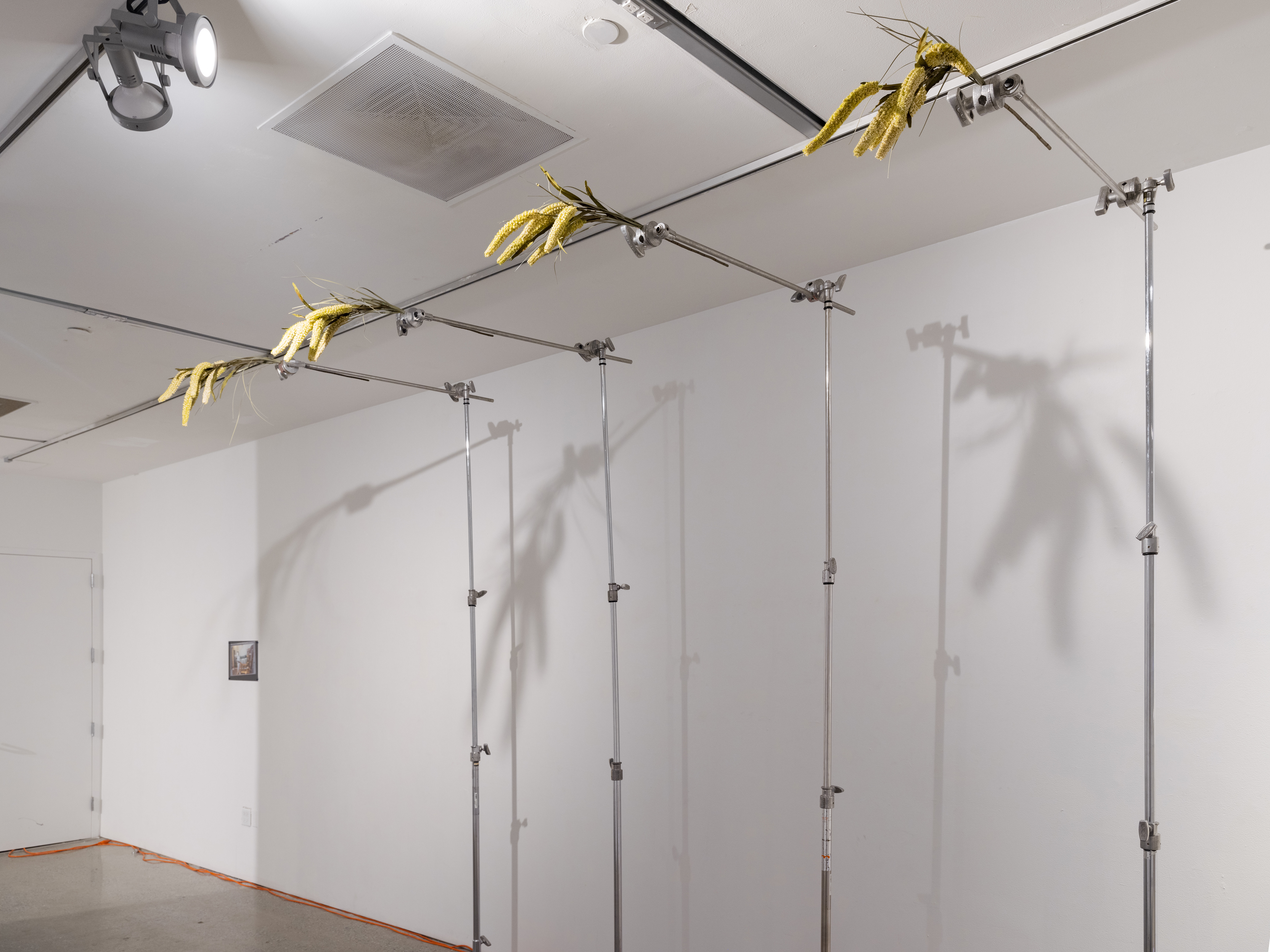
'-ficial (Johnny Handsome, 95min, 1989)' '-ficial (Dead Man Walking, 122min, 1995)' '-ficial (Out Of Sight, 123min, 1998)' '-ficial (Monster’s Ball, 113min, 2001)' materials: c-stand, plastic sorghum.

'Camera Test (Best Western Hotel, St. Francisville, LA.)' materials: 21 non-archival pigment prints behind an archival pigment print behind plexiglass.
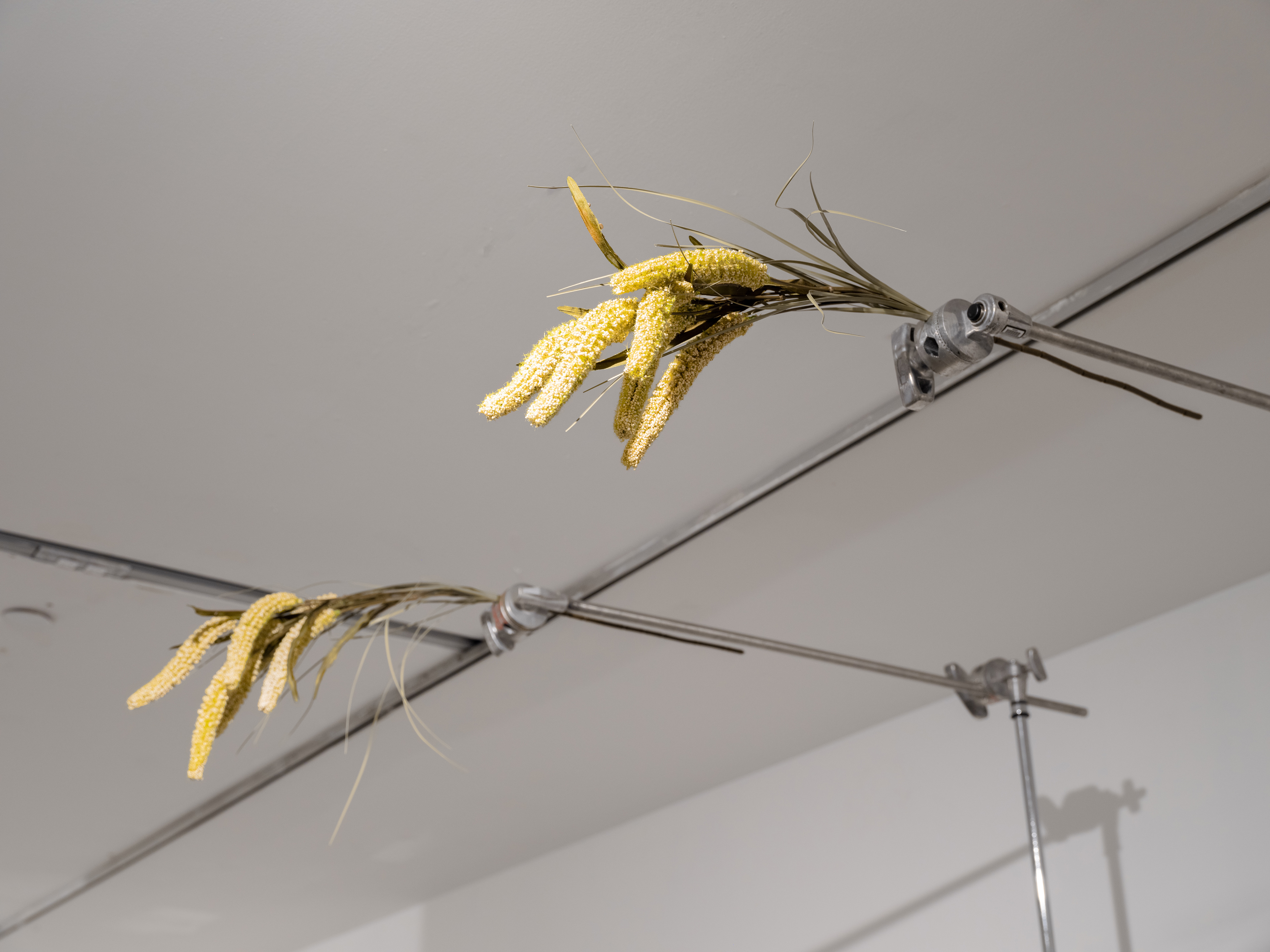
'-ficial (Johnny Handsome, 95min, 1989)' '-ficial (Dead Man Walking, 122min, 1995)' '-ficial (Out Of Sight, 123min, 1998)' '-ficial (Monster’s Ball, 113min, 2001)' materials: c-stand, plastic sorghum.

'-ficial (Hate Crime, 90min, 2017)' materials: c-stand, plastic sorghum.
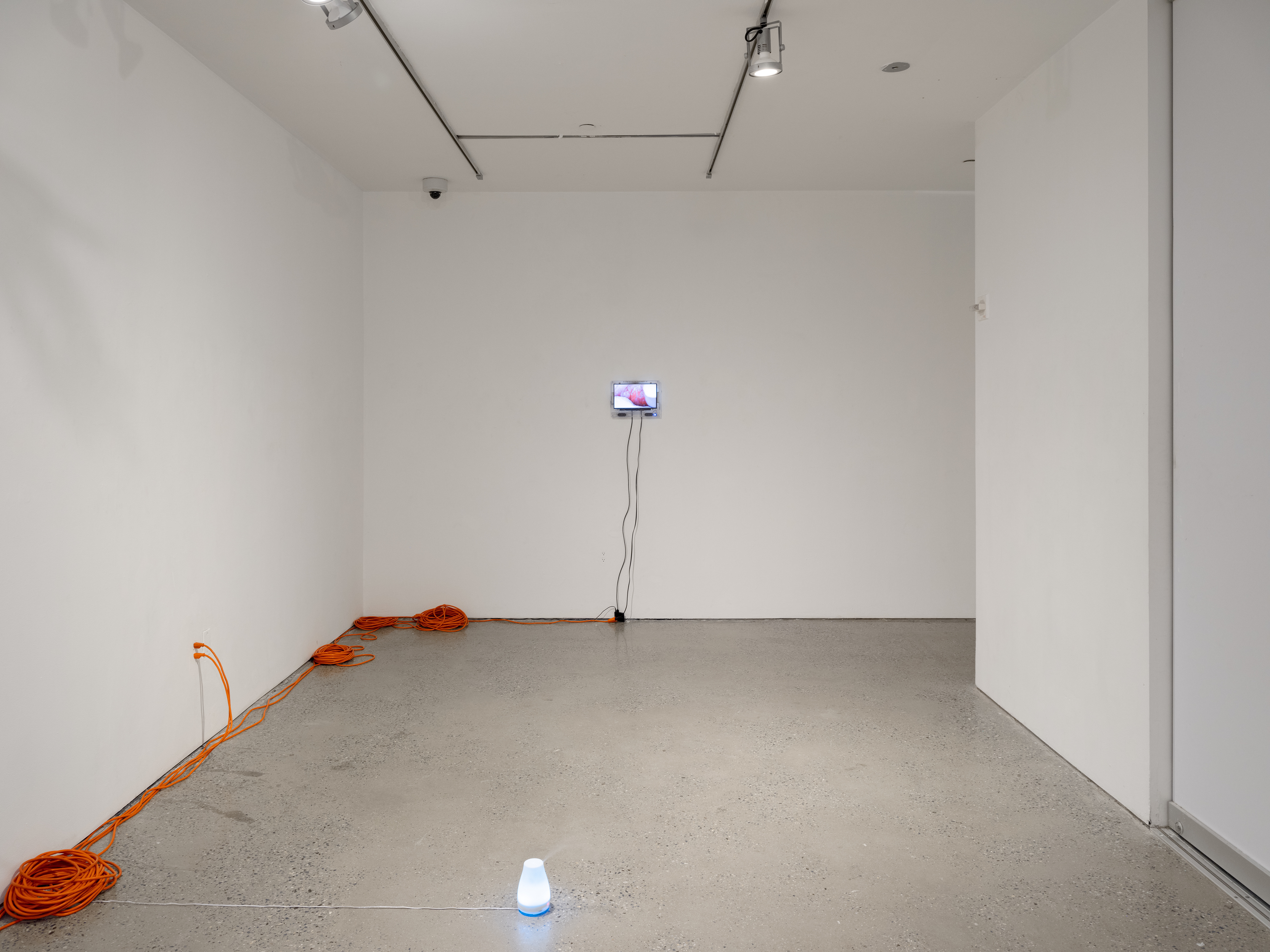
'Alveolus 1 (Fool Proof Sob Story)' and 'Alveolus 2 (The Invisible Part)'
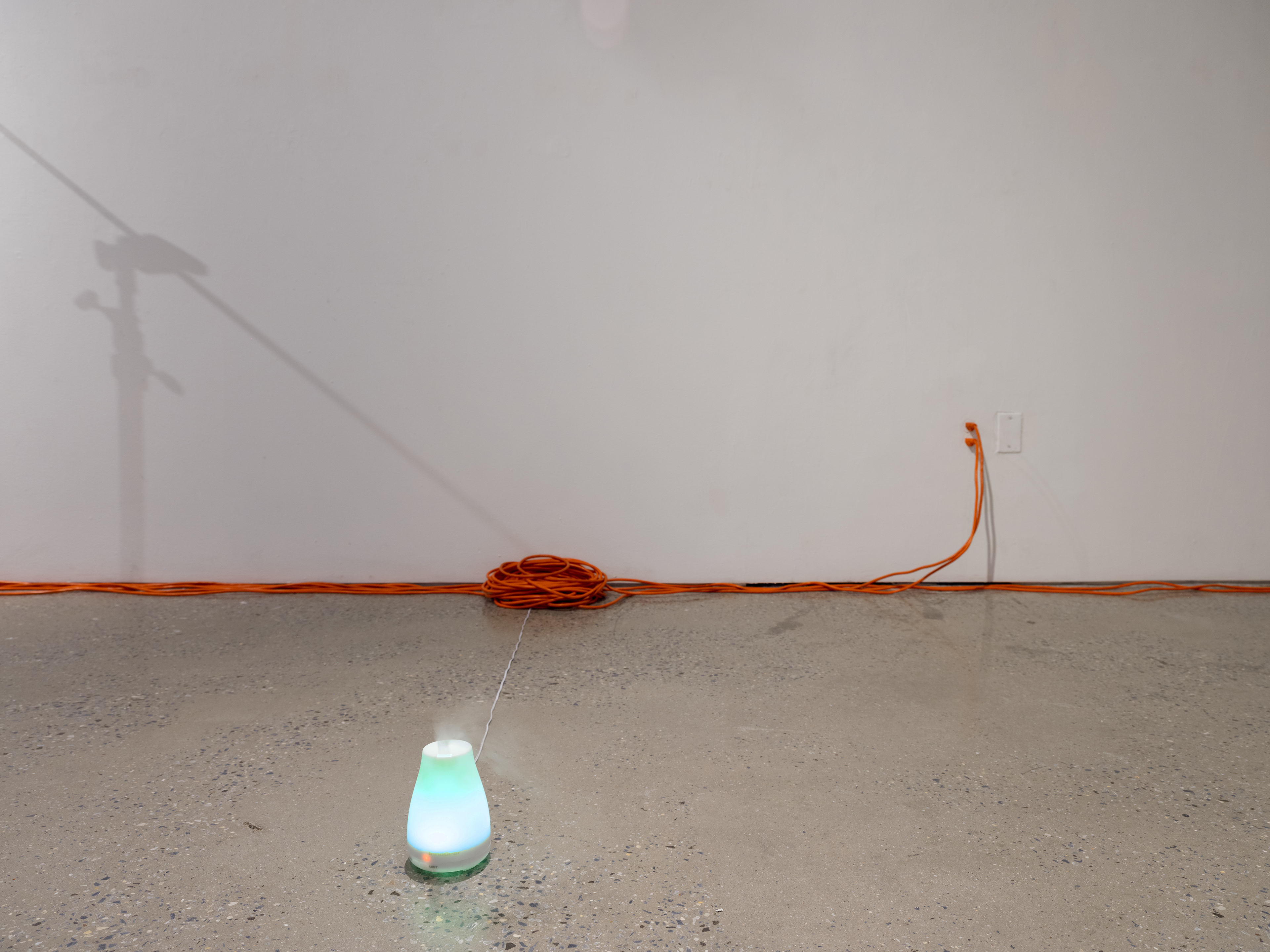
'Alveolus 1 (Fool Proof Sob Story)' materials: oil diffuser, ‘Gutz N Glory’ hot sauce, glands, power grid.
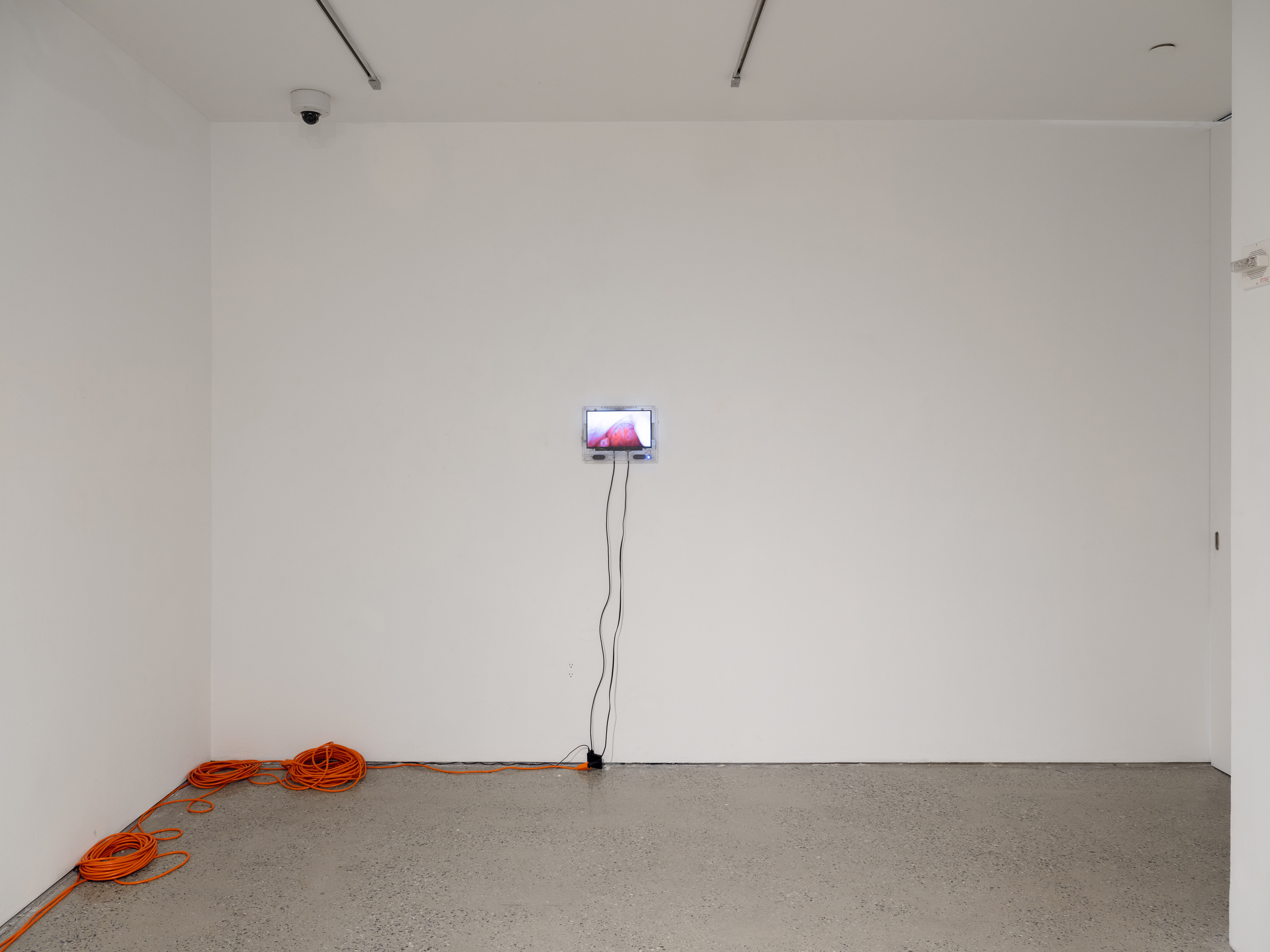
'Alveolus 2 (The Invisible Part)' materials: prison issue television, tampering, single channel video, steganographically hidden audio file, security camera, media player, microsd chip, power grid.

'Alveolus 2 (The Invisible Part)' materials: prison issue television, tampering, single channel video, steganographically hidden audio file, security camera, media player, microsd chip, power grid.
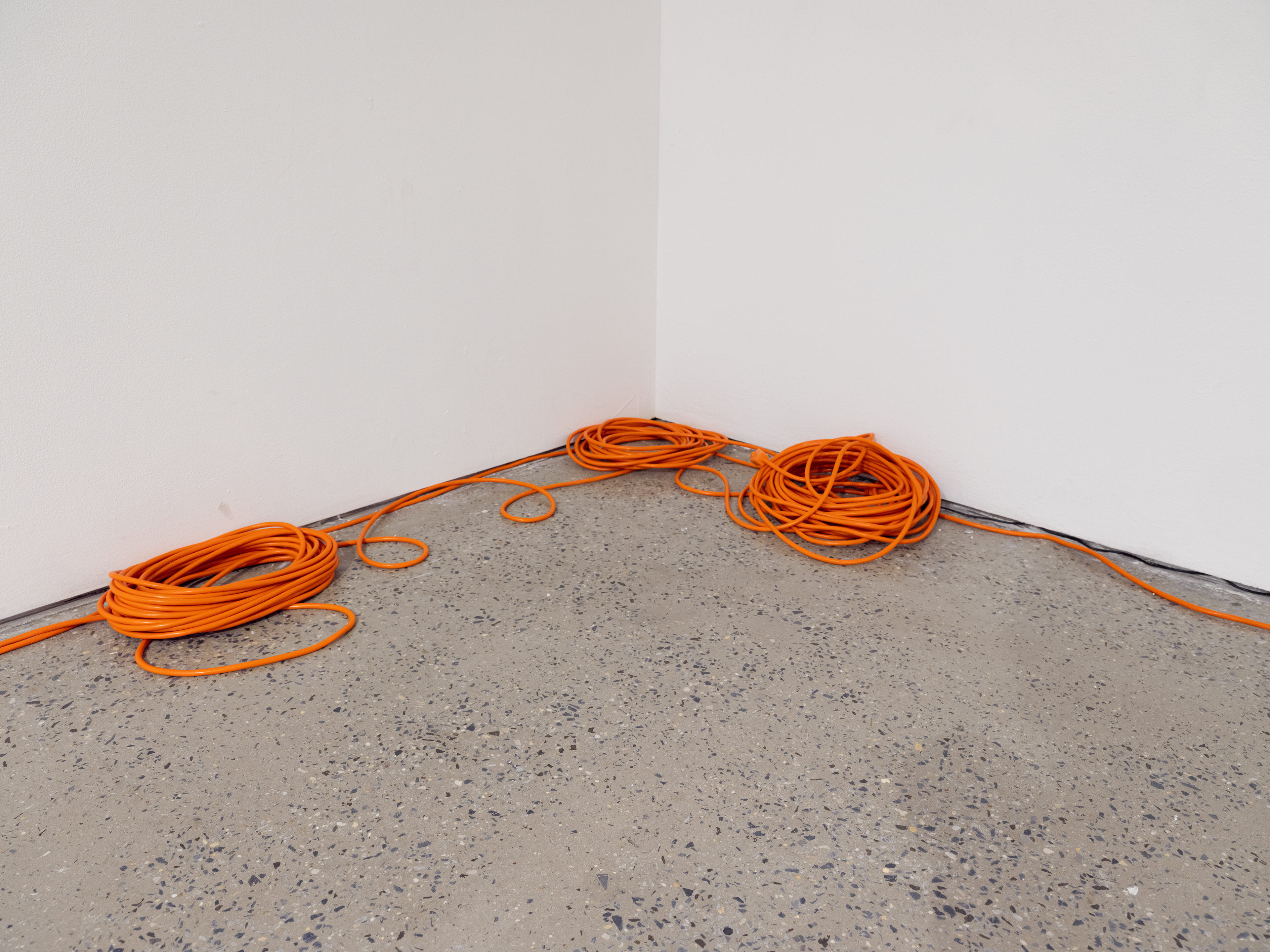
'Transversal (Democrats for Slavery)' materials: power grid.
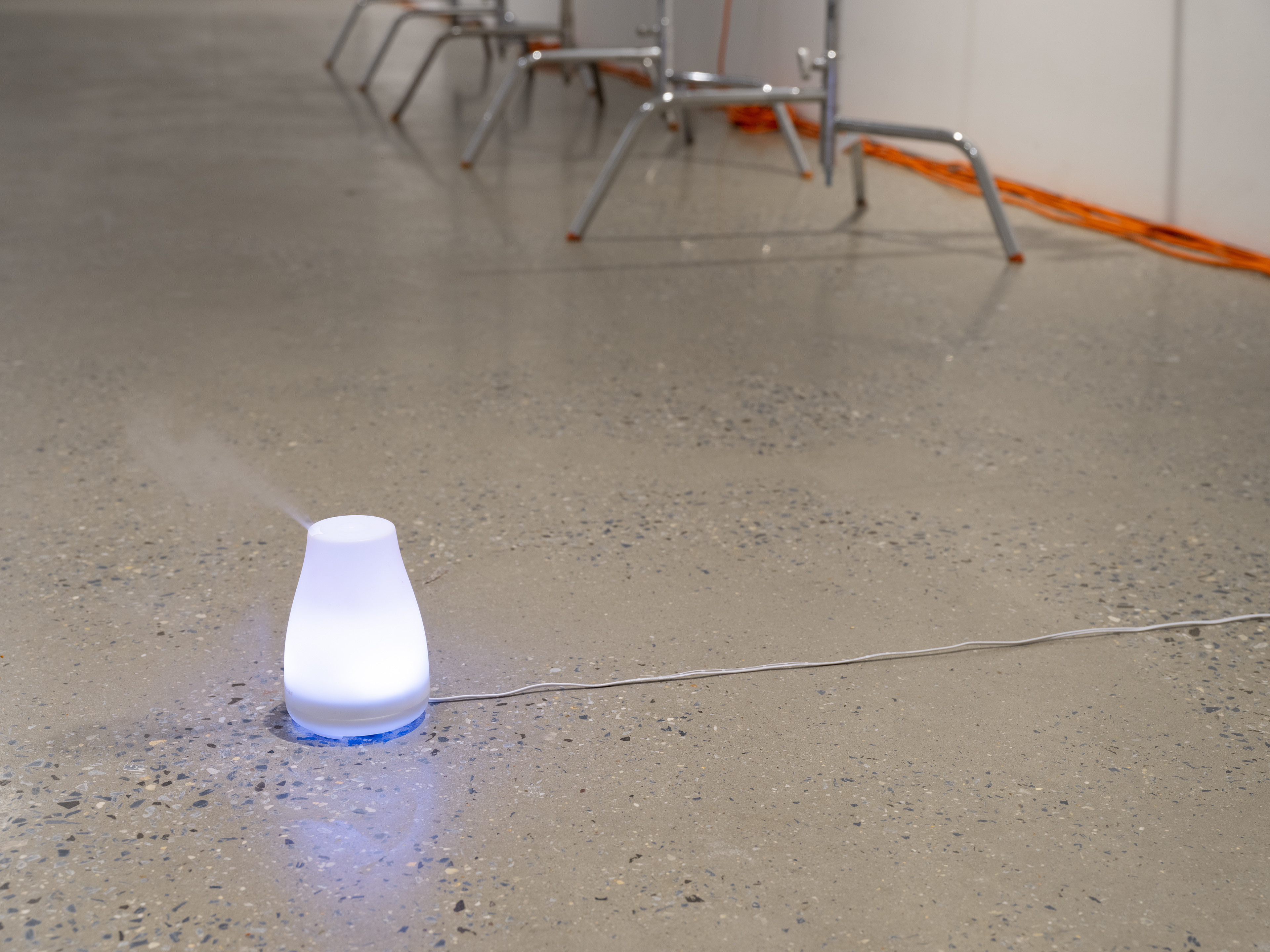
'Alveolus 1 (Fool Proof Sob Story)' materials: oil diffuser, ‘Gutz N Glory’ hot sauce, glands, power grid.
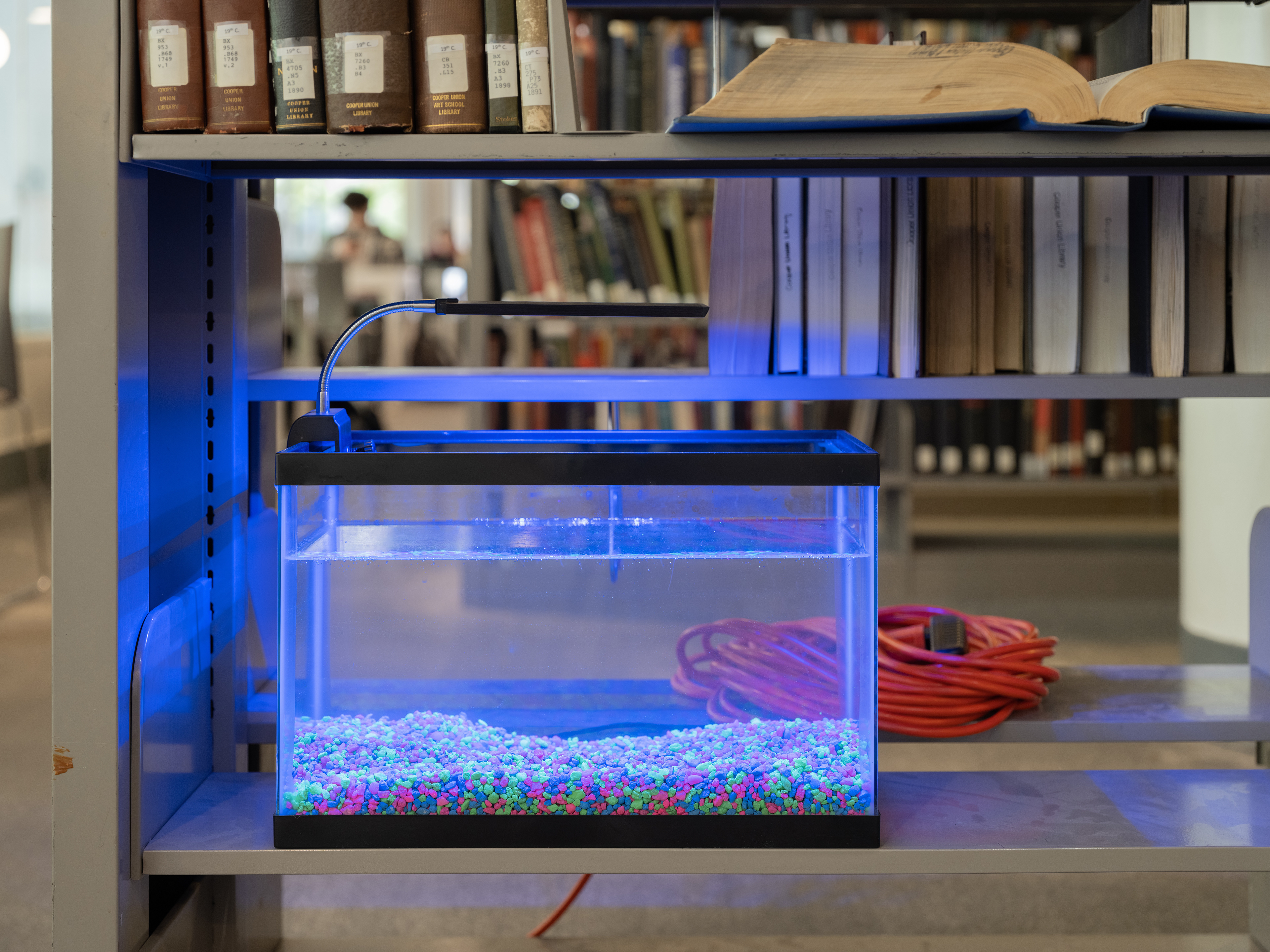
'Docile (Labyrinth Organ)' materials: betta fish named Minotaur, water, aquarium, library, light, power grid.
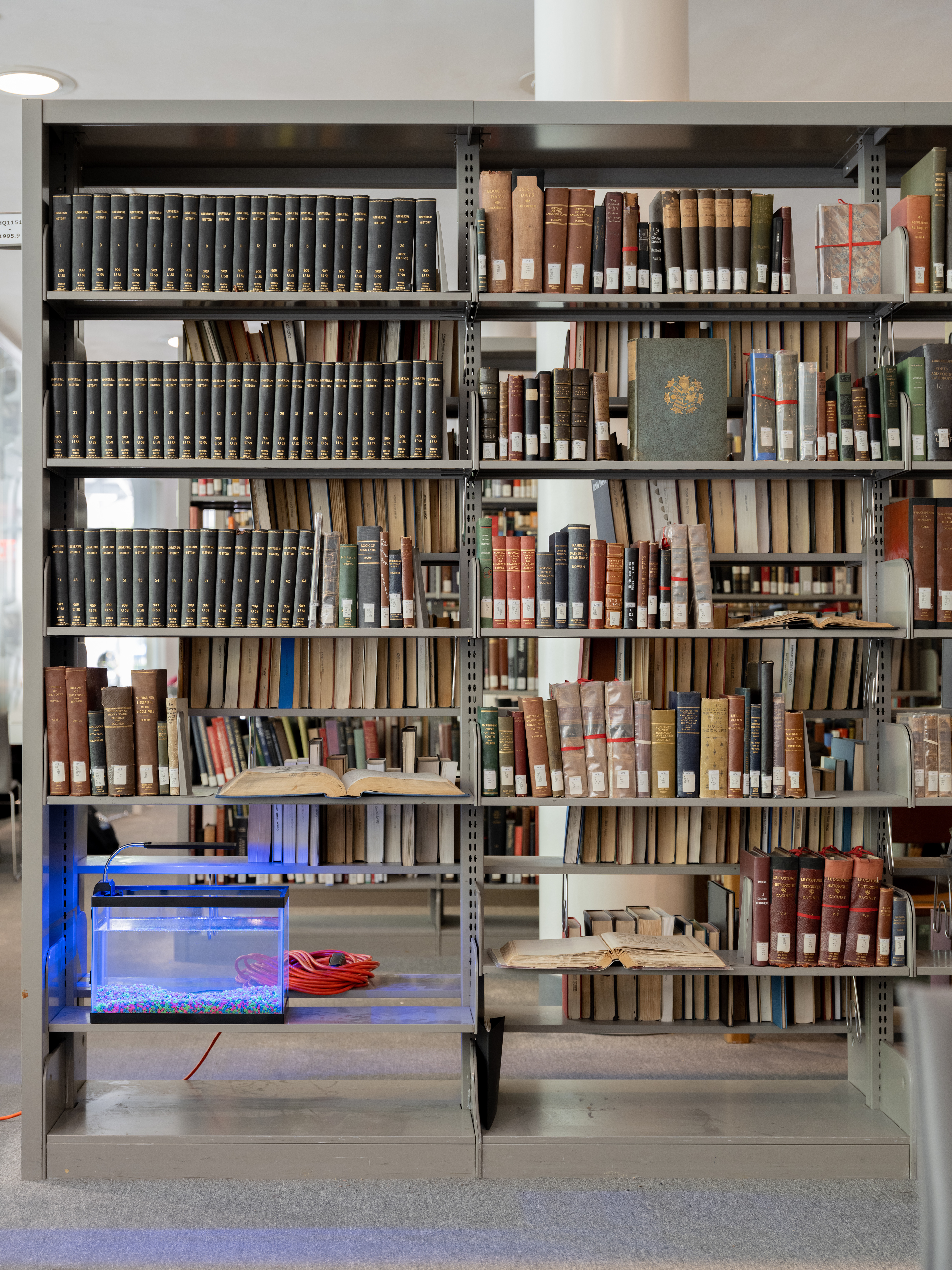
'Docile (Labyrinth Organ)' materials: betta fish named Minotaur, water, aquarium, library, light, power grid.
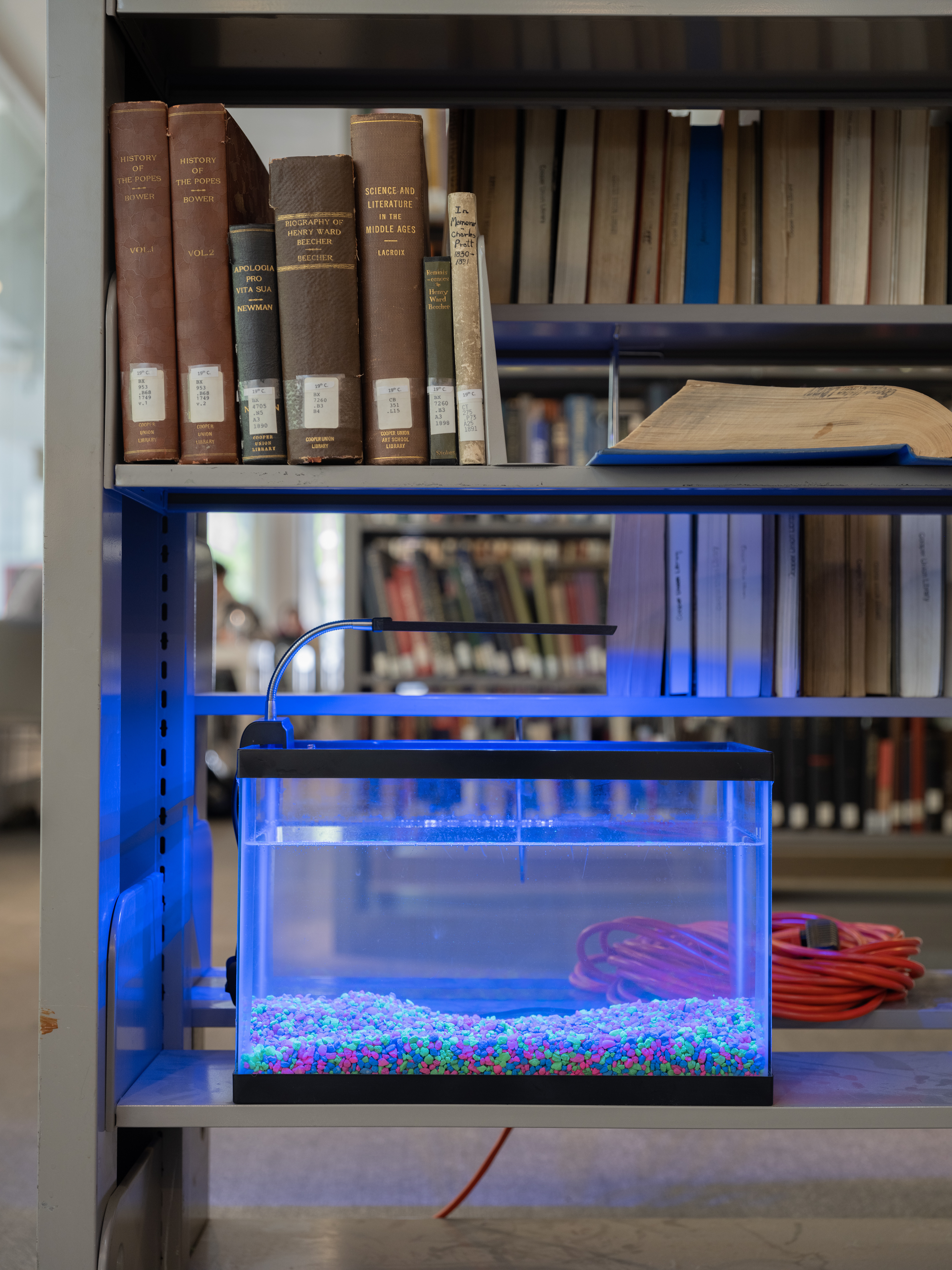
'Docile (Labyrinth Organ)' materials: betta fish named Minotaur, water, aquarium, library, light, power grid.
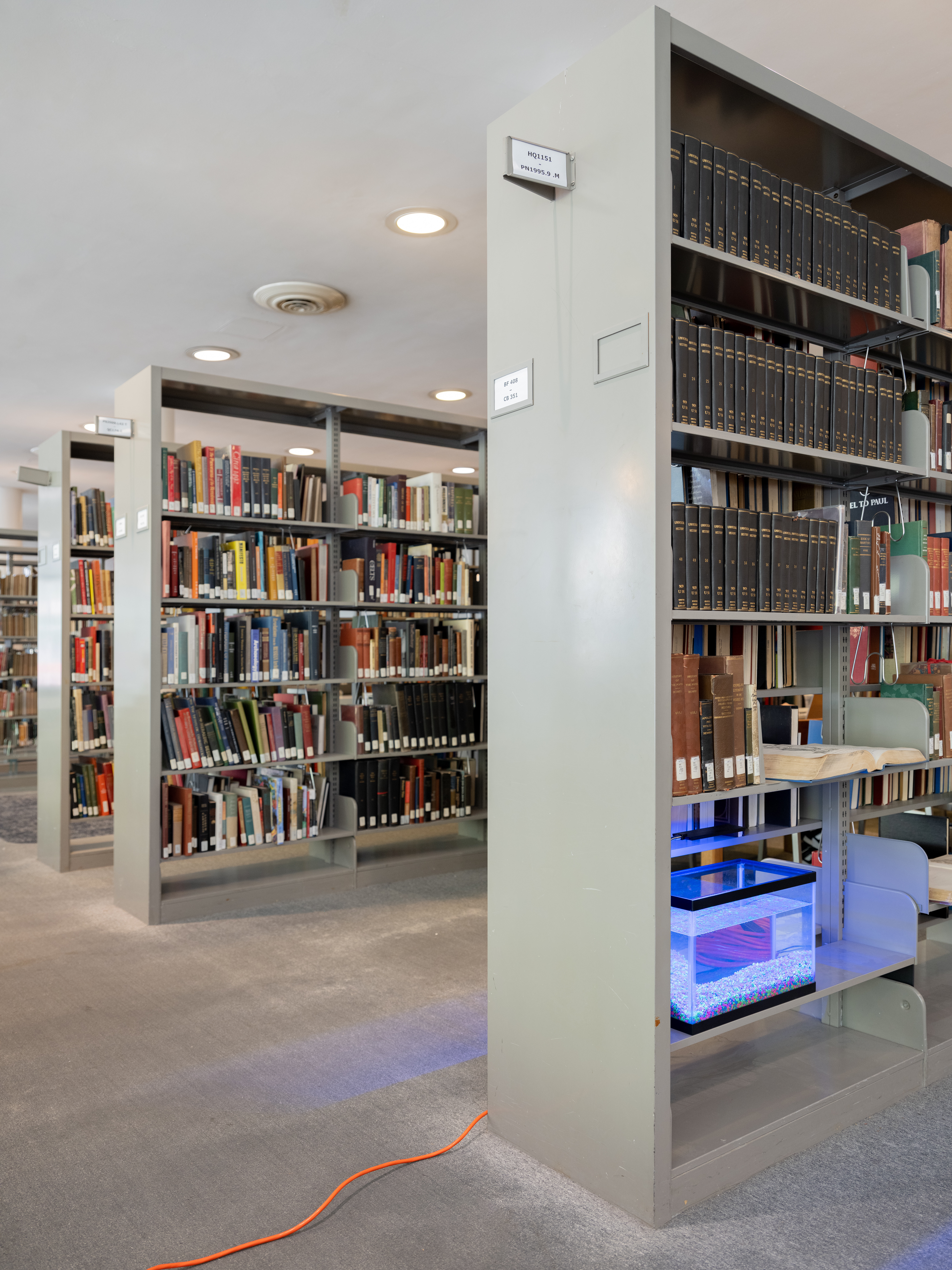
'Docile (Labyrinth Organ)' materials: betta fish named Minotaur, water, aquarium, library, light, power grid.
Checklist:
a. Hue Shift Hear Say
text; artist book.
b. Palimpsest
unlicensed Alamy stock image, non-archival pigment print behind non-uv protective plexiglass, concrete screws, humming.
21 non-archival pigment prints behind an archival pigment print behind plexiglass.
d. Alveolus #1 (Fool Proof Sob Story)
oil diffuser, ‘Gutz N Glory’ hot sauce, glands, power grid.
e. Alveolus #2 (The Invisible Part)
prison issue television, tampering, single channel video, steganographically hidden audio file, security camera, media player, microsd chip, power grid.
f. Docile (Labyrinth Organ)
betta fish named Minotaur, water, aquarium, library, light, power grid.
g. Transversal (Democrats For Slavery)
power grid.
h. -ficial (Johnny Handsome, 95min, 1989)
i. -ficial (Dead Man Walking, 122min, 1995)
j. -ficial (Out Of Sight, 123min, 1998)
k. -ficial (Monster’s Ball, 113min, 2001)
c-stand, plastic sorghum.
l. -ficial (Hate Crime, 90min, 2017)
c-stand, plastic sorghum
Thank you endlessly to: Adriana Amelia, Ágnes Berecz, Avra Spector, Bruce Kleski, Cristóbal Lehyt, Daniel Rampulla, Elias Dills, Ethan Kramer, Fia Backström, Jade Flint, Jesus De La Cruz, Kit Nichols, Leyla Ba, Lucy Raven, Mandi Sanchez, Max Cowen, Morris, my parents, Penelope Stryjewski, Ricci Amitrano, Roxy Jamin, Ryan Serrano-Hall, Zaid Arshad, and any unnamed but imbedded,
all install documentation images by Jack Ramsdell